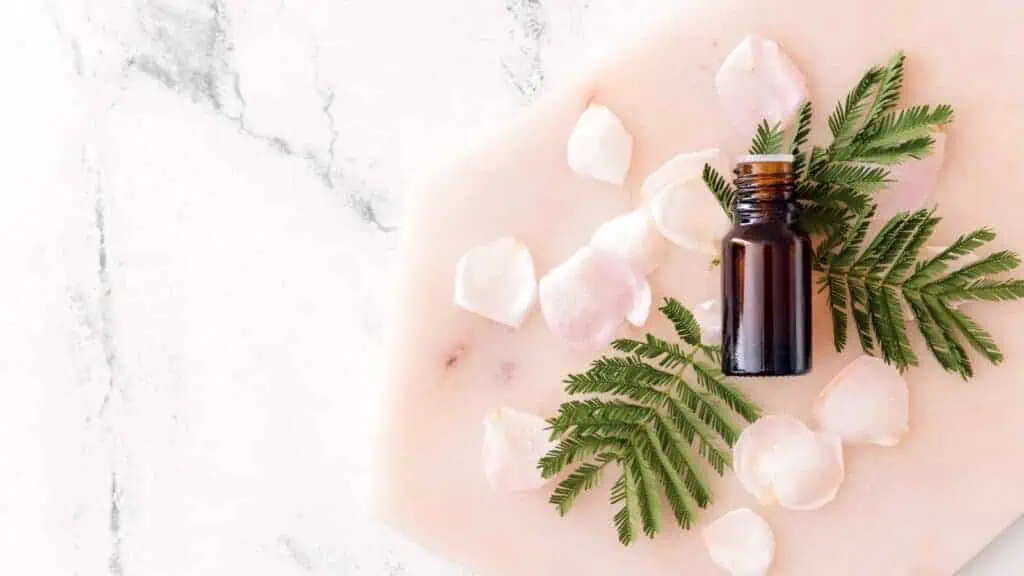Perineal Massage During Pregnancy: Necessary or Useless?
This post may contain affiliate links. As an Amazon Associate, I earn from qualifying purchases.
If you’re pregnant, you’ve probably had a lot of questions about how to prepare for labor. One topic that might come up with your doctor or midwife is how to prepare your perineum for labor to reduce the risk of tearing.
Perineal massage is one option for managing your tear risk. This article will cover what it is, its possible benefits, and how to get started.
What is a Perineal Massage?
Perineal massage is the gentle massage of the perineum, the area of soft, smooth tissue between your vagina and anus. This sensitive tissue is at risk for tearing during childbirth as the baby’s head pushes through the vaginal opening.
Perineal massage can be done prior to labor with the goal of “prepping” tissue for the birth of a baby, also known as antenatal perineal massage. Additionally, perineal massage can be utilized during labor as the baby is crowning by gently stretching the tissue to increase its pliability.
Related read: The Benefits of Natural Birth
Benefits of Perineal Massage During Pregnancy
To be honest, the research is a mixed bag on this topic. Some women and researchers have found that perineal massage prevents tears (particularly massive tears), while others show it’s a sham.
How do you decide if perineal massage would be beneficial for you?
Review these potential benefits of perineal massage and decide if it fits with your goals for birth.
- Preparing for birth. Antenatal perineal massage is thought to stretch the perineum and increase its elasticity. This, in turn, allows more space for the baby’s head and reduces the risk of perineal tearing.
- Less pain. Perineal massage increases blood flow to the area, which may help to keep the tissue soft during labor and reduce pain from crowning/pushing during vaginal birth.
- Easier birth. Regular massage of the perineum may make it easier to push during labor because the muscles and tissue have been adequately stretched in advance.
- Reduced need for stitches. Some evidence shows a reduced risk of needing an episiotomy (where they cut tissues to allow the baby’s head through).
- Fewer postpartum issues. It is possible that perineal massage can reduce the amount of perineal trauma, such as swelling, scar tissue, bruising, and other postpartum pain after delivery.
- Boost the healing process. Overall, perineum massage can give you a head start for postpartum recovery.
How to Do Perineal Massage During Pregnancy

Ready to try a perineal massage? Let’s review step-by-step perineal massage instructions:
1. Wash your hands
Make sure your hands are clean before touching any sensitive areas of your body to avoid vaginal infection. Wash with fragrance-free soap before you get started.
2. Grab some lubricant (massage oil)
You can use natural oils like almond, olive, or coconut oil or a personal lubricant like K-Y jelly. Choose whatever massage oil you’re comfortable with. Some women may not need any lubricant if there is enough vaginal discharge.
3. Find a comfortable position
Finding a safe and comfortable position when you’re pregnant can be difficult. Most women find lounging on their back with the knees bent the best position; just make sure you’re propped up enough to keep your baby safe (don’t like flat on your back). You can also get comfortable in a warm bath or on a shower bench with one foot propped up. Get creative and find a position you can maintain for 5 to 10 minutes.
4. Locate the perineum
The perineum is located between the vagina and the anus. It’s about two inches long and is made of very delicate skin. In fact, this is a very erogenous area that should feel good to rub.
5. Start the massage
Place two fingers over the perineum and press lightly. Start by moving your fingers in a circular motion around the area until you find comfortable, gentle pressure. Then, slowly start to apply more pressure as you massage deeper into the perineal tissues, always keeping it comfortable. You can also insert one or two fingers into the vagina and push down into the perineum as you rub back and forth in a U shape.
If you can reach, you use both index fingers to pull around and up each side of the vaginal opening for maximal stretching. Don’t forget to consciously relax.
6. Repeat
Perform regular perineal massage (3-4 times a week) until you give birth to reduce to risk of perineal trauma.
Note: Stop or reduce your pressure immediately if you notice anything more than a slight burning sensation.
Massage Tools on the Market
In reality, not every woman is comfortable with this kind of massage. Plus, their bellies might make it feel impossible even to reach their perineum in the first place.
Here are a few favorites on the market that pregnant women love:
- Perimom. A tool specifically designed for pregnant women to reach and massage the perineum comfortably.
- Deep tissue massage tools. These tools can be used in any hard-to-reach areas in the body, like the neck, back, and perineum.
- Pelvic wand. A U-shaped wand for reaching the perineum and other trouble spots inside the pelvis (common postpartum). It can be purchased with vibration for additional relaxation potential too.
In addition, if you have personal use items for the bedroom already (such as a vibrator) you can use these tools to help too. If you’re buying a tool, don’t forget to throw some best-selling massage oil in while you’re at it.
Talking to Your OB or Midwife About Perineal Massage During Labor
We’ve covered a lot of information about perineal massage during pregnancy, yet most of the research shows its benefits during labor. Of course, you won’t be massaging your own perineum during labor. Plus, there’s a good chance you won’t want your partner massaging during labor (maybe your back, not your perineum).
Talk to your doctor or midwife about whether they agree a perineal massage could help the labor process. It is common for a midwife or labor nurse to provide perineal massage and stretching during labor, often right before and/or during pushing. Some may even apply a warm compress to help blood flow.
Don’t be afraid to ask for these things during your vaginal birth! Or have your partner ask them when you’re too busy laboring. The key is for the midwife or nurse to massage gently; evidence shows there’s no need to be rough.

Related read: What to Pack in Your Hospital Bag
Perineal Massage FAQ
You probably have more questions; let’s review some commonly asked questions to ensure you’re comfortable.
Should I do perineal massages during pregnancy?
This is totally up to you. Women that are nervous about tearing find it helpful to alleviate their anxiety. However, if you aren’t comfortable or don’t have time to do it, don’t fret. It’s a bonus option if you’re feeling up for it.
The strongest evidence is for performing perineal massage during labor, so don’t worry about doing so beforehand (antenatal perineal massage) unless you want to give it a try.
Is perineal massage painful?
No, although it can be uncomfortable at first. The most important thing is to make sure you’re using a good lubricant and keeping movements gentle.
When to start perineal massage during pregnancy?
It’s recommended to start perineal massage sometime in the third trimester of pregnancy, usually around weeks 34 to 36.
How do I get my partner involved?
It can be helpful to get your partner involved in the massage. You might try it yourself first and then show them what’s most comfortable. If your partner is hesitant, you can try explaining the benefits to them.
Is perineal massage enjoyable?
It should be! Perineal massage can be a fun and intimate way to connect during pregnancy. Why not make it enjoyable? There’s a chance that the massage will turn into other fun together- enjoy it while you can before that baby comes, and your body needs at least 6 weeks to heal.
Are there any risks of prenatal perineal massage?
When you perform perineal massage, there are a few risks. These include vaginal infections and perineal pain. If you have vaginal herpes, you also risk a flare or spreading it to other areas of the body.
What else can I do to prepare for labor and vaginal delivery?
There are a lot of other things you can do to prepare mentally and physically for birth. For example, you can try pelvic floor exercises (for strengthening in increasing the extensibility of the pelvic floor muscles). Additionally, you should very seriously consider taking a birth class.
For more info on preparing for labor, see our full article about birth prep.
Reducing Perineal Trauma with Massage
A perineal massage is an effective tool for minimizing perineal trauma during childbirth. While early research suggests it may also be beneficial in pregnancy, there’s more evidence for labor itself. Choose what works best for you and your partner.
Be sure to talk to your doctor or midwife before starting any massages, and use proper lubrication while doing so. And don’t forget to have fun and enjoy it!






